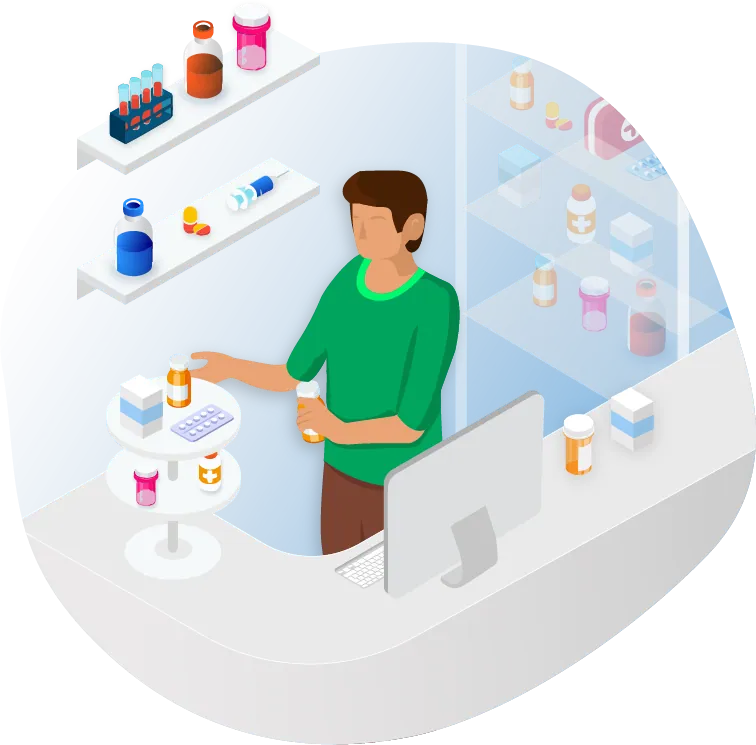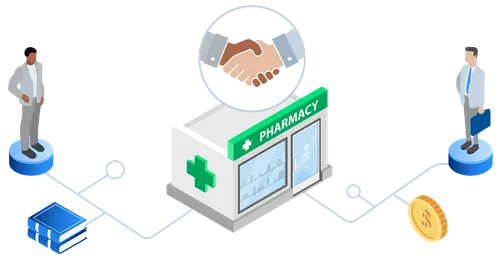Starting your own pharmacy is just like buying your first home – once you purchase it, you need to get everything that goes inside. This can seem overwhelming, but connecting with the right partners and resources will make your life easier and provide you with the best options for your pharmacy.
Medications
Your partnership with your wholesaler will directly affect your profitability. Building a strong relationship will go a long way in ensuring a stable, reliable inventory. When choosing a wholesaler, think about their proximity to your store, delivery schedules, and billing cycles. Other factors to consider are cost, customer service, products available for sale, and any discounts/incentives they may offer. If you join a PSAO, they typically provide guidance and contracting services to help you select a wholesaler that best fits your pharmacy’s needs.
Sometimes it may be necessary for a pharmacy to rely on multiple wholesalers. This could be due to price changes or availability of items. With PioneerRx, the software is equipped to automatically compare providers and manage inventory orders based on the current information available.
Technology
"I think we're at the beginning of a revitalization for community pharmacy...and what we need in our software vendor is someone that has no boundaries in what they can help us accomplish...And PioneerRx fits that mold."
— Thad Schumacher
PioneerRx User
When Tabraiz Khan first opened Pharma1 Pharmacy and Wellness Center about 3 years ago, he chose PioneerRx as his pharmacy software from day one. He had heard good things from his professional peers and ended up deciding that PioneerRx was the right fit. “PioneerRx Pharmacy Software is honestly the most asked-about, number-one rated system out there,” begins Khan. “I knew I would eventually be getting into compounding, so I needed a standalone software that could do a little bit of everything, and that [led me] to PioneerRx. And it was just really simple to use, so I love the convenience of it.” His newly-hired PIC Matthew Kamphaus also notes how easy the software has been to learn and use on a daily basis.
Having the right tools and technology in your pharmacy allows you to innovate your workflow, gain loyal customers, and allocate time and resources efficiently. When opening a new independent pharmacy and selecting your pharmacy management system, it is vital to find a system that will grow with you. Think about where you see your business 5, 10, 15 years down the road. Will your pharmacy system be able to keep up? Make sure to also consider what features are included vs. what are add-ons. Are you going to spend even more money buying all the necessities for your system?
PioneerRx pharmacy software is the #1 software chosen by independent pharmacists to open their new stores with. Let us show you our passion for saving and revitalizing independent pharmacy and explore our full list of pharmacy features.
To further optimize your pharmacy system, you may decide to incorporate additional technology. Our mobile apps give you the flexibility to bring your workstation with you anywhere in the pharmacy – or outside of the pharmacy! Choose from valuable additions like HIPAA-Compliant 2-Way Messaging, Mobile Refills, Patient Counseling, Mobile Delivery, Drive-Thru, and Mobile Inventory. PioneerRx also partners with around 70 technology vendors to provide products that integrate seamlessly with our software. From automation to inventory to IVR and more, we connect you with the tools you need to take your pharmacy to the next level.























